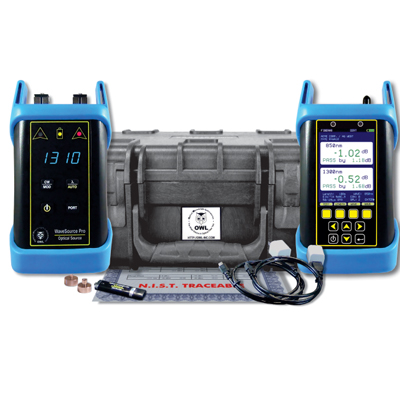Efficient Robotic Vision Solutions for Seamless Automation Systems
Efficient Robotic Vision Solutions for Seamless Automation Systems
Blog Article
Why Optical Fibre Screening Devices Is Critical for Network Upkeep
In the realm of network upkeep, the value of optical fibre screening tools can not be overstated. By employing tools such as Optical Time Domain Name Reflectometers and Optical Power Meters, network specialists can guarantee conformity with market requirements while proactively resolving possible disturbances.
Importance of Routine Checking
In the realm of telecommunications, the importance of routine testing of optical fibre can not be overstated. Optical fiber networks act as the foundation of modern interaction systems, promoting high-speed data transmission over vast distances. Normal screening guarantees the integrity and reliability of these networks, detecting possible issues prior to they escalate right into significant troubles.
Evaluating helps identify faults, such as breaks or bends in the fibre, which can lead to increased signal loss and compromised efficiency. Abnormalities in transmission can degrade customer experience, causing slow data rates and service interruptions. With systematic screening, network operators can preserve ideal efficiency, making sure marginal downtime and maximizing solution schedule.
It supplies documented proof of network wellness, which is vital for audits and assessments. In verdict, normal optical fiber screening is essential for keeping the functional effectiveness, safety, and durability of telecoms infrastructure, inevitably making sure a seamless communication experience for customers.
Secret Types of Screening Tools
An additional vital tool is the Optical Power Meter, used to measure the power degrees of optical signals in the fibre. When coupled with a source of light, it allows the evaluation of web link loss, guaranteeing that the network runs within defined criteria.
Furthermore, a Fiber Identifier is important for recognizing particular fibres in a multi-fibre wire without interfering with service. This tool helps in maintenance tasks by identifying the proper fibre for screening or fixing.
Lastly, Visual Fault Locators (VFL) are utilized to identify breaks and faults in fibre cables by releasing a visible light. With each other, these screening devices create a vital toolkit for keeping and fixing optical fiber networks, guaranteeing reputable efficiency and lessening downtime.
Troubleshooting Common Issues
When repairing common concerns in optical fiber networks, specialists often experience a variety of issues that can impact performance and connection. One widespread problem is signal loss, which might stem from aspects such as inappropriate splicing, flexes in the fiber, or filthy connectors. Making Use Of an Optical Time Domain Reflectometer (OTDR) enables service technicians to pinpoint the precise location of faults and examine the stability of the fiber optic cable.
Another usual problem is attenuation, which describes the decrease of signal toughness over distance. This can arise from too much bends or incorrect installation strategies. Routine screening with power meters and light resources can help recognize extreme attenuation and figure out if the installation sticks to industry criteria.

Enhancing Network Performance
Addressing typical concerns such as signal loss and depletion sets the foundation for improving network efficiency in optical fibre systems. By utilizing innovative optical fiber screening equipment, network managers can identify and fix mistakes that compromise signal honesty. This aggressive technique not only avoids destruction of solution but likewise enhances the general performance of the network.
Regular testing allows for the detection of potential concerns before they rise, guaranteeing minimal disruption to users (optical fibre diameter analyser). By measuring criteria such as insertion loss, return loss, and optical power degrees, professionals can get valuable understandings into the health and wellness of the fibre network. This data-driven strategy allows targeted upkeep methods, helping with quicker fixings and reducing downtime
In addition, maintaining optimum efficiency degrees is important for sustaining the boosting needs of modern-day applications, such as high-definition video streaming and cloud computer. Boosted network efficiency translates to enhanced customer experience, faster information transmission, and greater dependability.
Cost-Effectiveness of Maintenance
Purchasing optical fiber screening equipment settles substantially in regards to upkeep prices. By utilizing innovative testing devices, network drivers can proactively detect faults and concerns within the fibre optic infrastructure. This early identification minimizes the danger of catastrophic failings that could cause considerable downtime and expensive repairs.
Moreover, the capability to promptly assess the condition of fiber wires permits a lot more efficient appropriation fibre testing equipment of maintenance resources. Professionals can concentrate their initiatives on areas that need instant focus, rather than conducting wide, lengthy assessments that may not generate critical understandings. This targeted technique not just decreases labour costs but also improves the total performance of maintenance techniques.
Moreover, routine testing with optical fiber equipment enhances the life-span of the network facilities. In summary, the cost-effectiveness of upkeep is considerably enhanced via the tactical usage of optical fiber testing equipment, eventually leading to a robust and dependable network.
Conclusion
In conclusion, optical fiber screening devices plays an important duty in keeping network integrity and efficiency. Routine screening is vital for very early fault detection and reliable troubleshooting, ultimately boosting network dependability.
Report this page